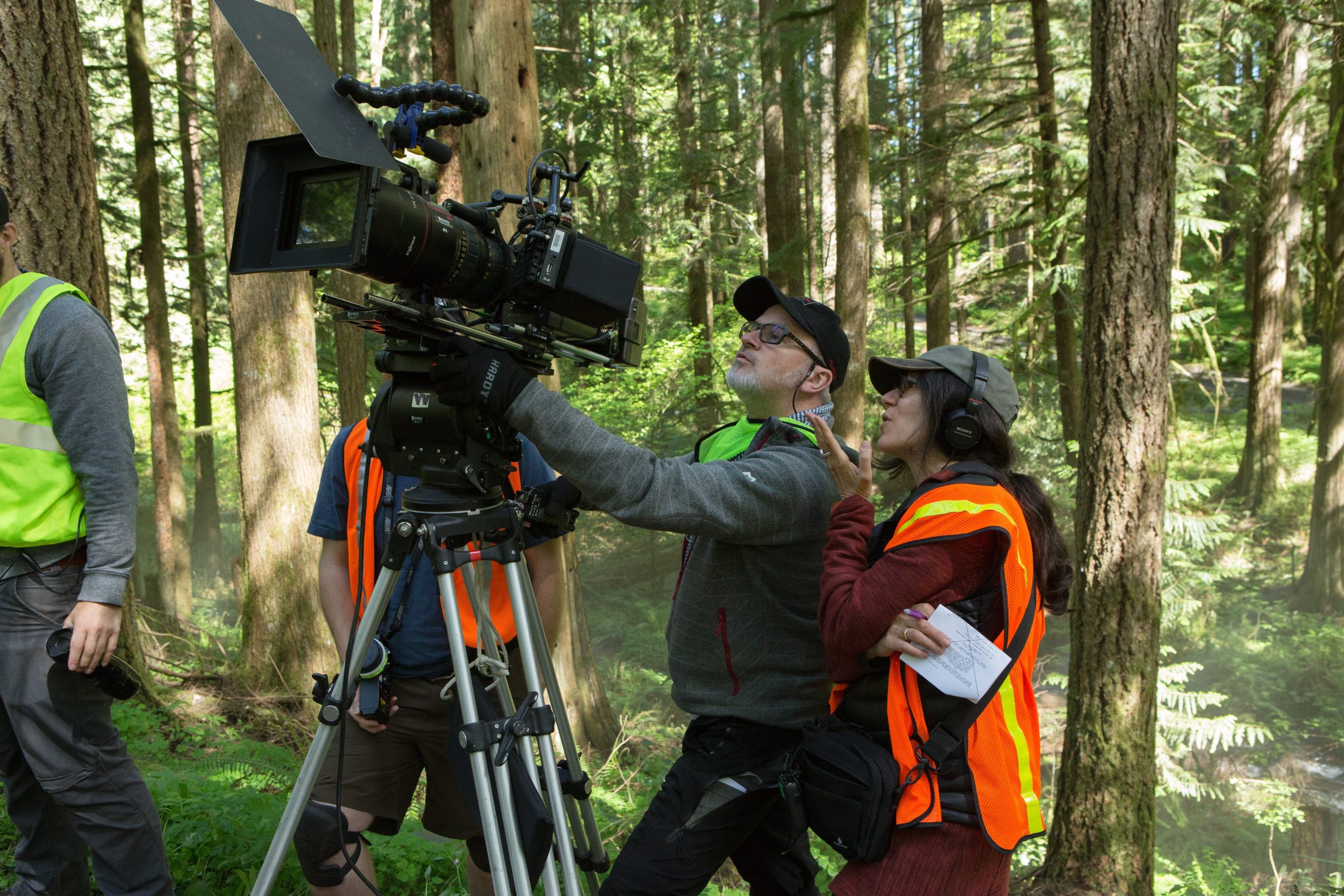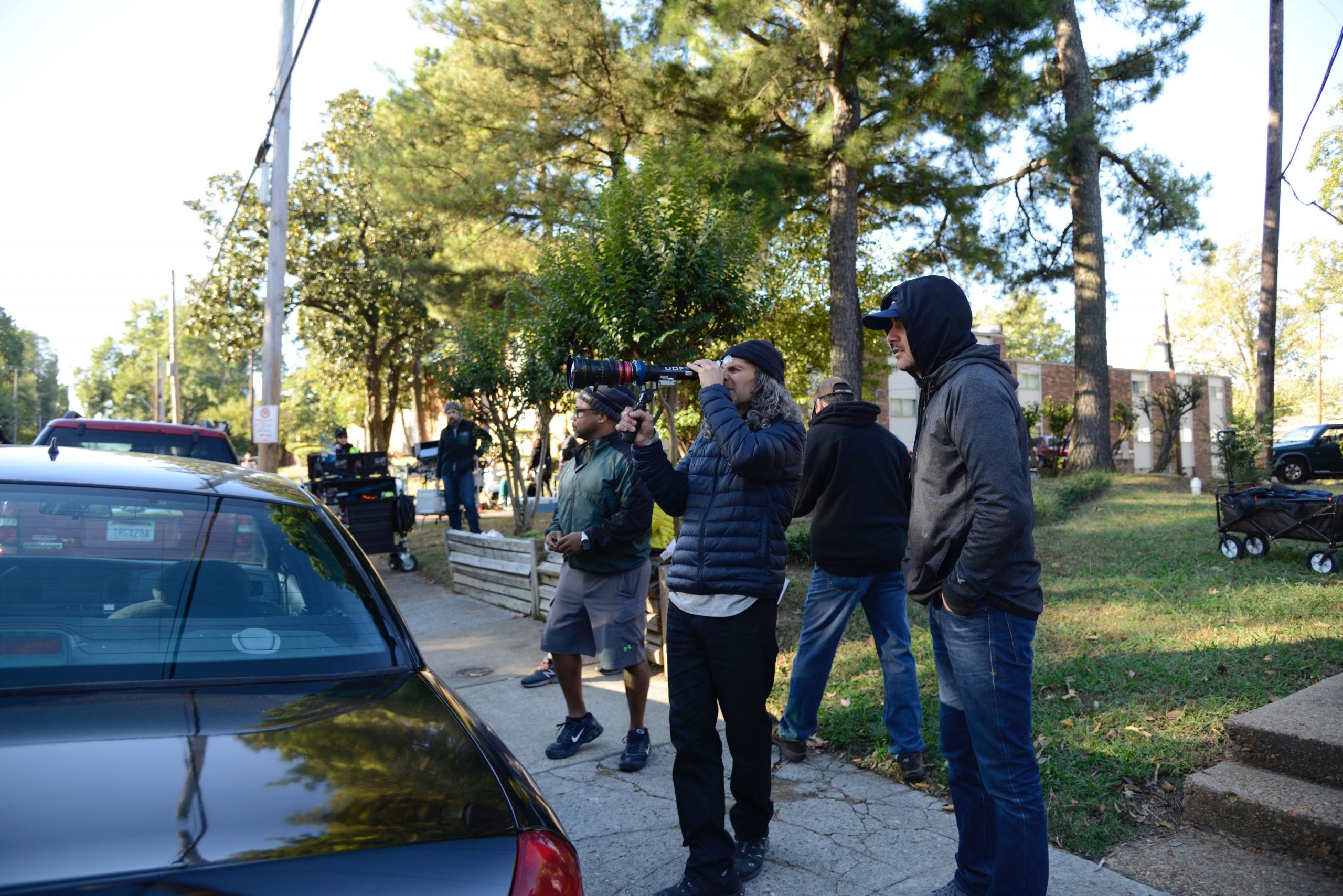
11. Portland, Oregon
A casting notice that went up in April, 2017 for the Portland-filmed HBO pilot Here, Now with Tim Robbins and Holly Hunter specifically called for “Portland hipster types,” but hey, there are worse things to be. Portland’s reputation as a progressive bastion goes hand in hand with its ingrained, bustling film community, one that prides itself on low barriers of entry. A handful of first-time feature directors filmed or began screening their work in 2017, including Shut Up Anthony’s Kyle Eaton, She’s in Portland’s Marc Carlini and Clementine’s Lara Jean Gallagher, who saw her film accepted into Venice and Sundance programs.
“Portland has earned its reputation as a welcoming, livable city for people within the film industry,” says Portland Film Office Manager Brian Lord. “The local production culture promotes access to mentoring and idea sharing, and the industry enjoys strong support from elected officials and public-private partnerships.” Lord adds that the Film Office is working together with partners to address challenges of housing costs, innovation and equity, and that the momentum is there to push Portland even further along its path to being one of the industry’s indispensable North American cities. A few things that Bridgetown already boasts: gorgeous locations, friendly locals, incredible food, and a deep art house cinema scene.

Debra Granik and DP Michael McDonough shoot the forest for the trees during the Portland-based production of Leave No Trace.
12. Oklahoma City, Oklahoma
Anyone who has visited a film set in Oklahoma City in late summer probably has the same handful of takeaways: the real-life cowboys milling around, the picturesque mom and pop diners dotting Route 66, and the city’s breathtaking open skies that even a wide-angle lens can’t truly capture. It’s the kind of natural beauty that makes you hope they know what they’ve got there. To wit: The Oklahoma Film + Music Office is currently offering a cash rebate of 35-37 percent on qualified transactions, with a base increase of two percent for a minimum spend on music recorded in-state. The rebate program, which OF + MO Director Tava Sofsky says is “among the most competitive film incentives in the U.S.,” was recently given a 10-year extension until 2024.
Sofsky also says that Oklahoma City is undergoing a renaissance and notes the city’s inclusion in a 2017 Forbes ranking of top 10 cities for entrepreneurs as well as nods in other rankings for lowest cost of living and lowest cost of doing business. More ear-to-the-ground evidence might be the city’s healthy smattering of noted film festivals, including the deadCENTER Film Festival, founded in 2001 to bring attention to local moviemakers and named for its location in the exact center of the U.S. There’s also the anticipated 2018 opening of Rodeo Cinema, in a 1924 building in the Stockyards neighborhood that was once a live music venue. The theater will be a sister cinema to Tulsa’s Circle Cinema, which shows arthouse fare and specialty programming.

Crewmembers prep Stef Dawson (C) on the Oklahoma City set of Painted Woman. Photo by Priscilla Tran.
13. Philadelphia, Pennsylvania
The Philadelphia film community’s last couple of years have been rocky, no pun intended. While the city has its perennial film heroes like Philadelphia’s Andrew Beckett and the Italian Stallion, a real-life champion is what’s been needed to help Philly’s commercial film scene dig out of a malaise attributed partially to uncompetitive tax incentives and competitive neighbors. The Greater Philadelphia Film Office’s failure in 2016 to lure David Fincher’s Netflix series Mindhunter to Philly after Fincher had begun scouting locations (the show ultimately went with Pittsburgh) caused enough of a stir to warrant an article in Philadelphia magazine. The Film Office’s chief Sharon Pinkenson told Philadelphia that while Pittsburgh has the same tax credits as Philly, the unspoken difference was Pittsburgh’s more amenable labor union. Around the same time as the Mindhunter loss, a Nicolas Cage thriller with the working title Philly Fury took its production to Mississippi.
Since that period, a handful of marquee projects have turned up on Philly’s doorstep, including the Bryan Cranston-Kevin Hart comedy The Upside and the long-awaited sequel to M. Night Shyamalan’s Unbreakable, titled Glass. Also, this past June, Pinkenson and her colleagues in the Film Office rebounded in a major way, staging a passionate public rally at the Philadelphia Museum of Art—the “Rocky steps”—in support of better tax credits. Shyamalan spoke to the crowd at the rally, and repeated what friends in L.A. say when they ask for the low-down on shooting in Philly: “Do they have the tax credits? It’s the first question they ask,” he said.
Meanwhile, the indie film scene in Philly is humming along with production company South Fellini as a good example. Co-founded by Philly natives Tony Trov and Johnny Zito in 2010, the company has developed graphic novels and films for Image Comics, Ford Automotive and Red 5 Comics among others, while shooting the 2013 horror comedy Alpha Girls and, more recently, the as-yet unreleased horror film American Exorcist. “Philadelphia is a great city for filmmaking,” Trov says. “We have tons of resources and few restrictions, plus the city is just beautiful. If you’ve ever fantasized about making a gritty, down-in-the-streets, ’70s-style indie film, this is where it can happen, right now.”

M. Night Shamylan on the Philly set of Glass. Photograph by John Baer, courtesy of Universal Studios.
14. Memphis, Tennessee
Memphis will always be the home of the King (Elvis, that is), but it’s so much more. With a population approaching 700,000, the city hosted 119 client projects in 2017, resulting in a reported 983 jobs, and the number of network series ballooned from 24 to 42, including NBC’s hit show This is Us. In addition to the state’s cash back rate of 25 percent offered to productions that qualify, the city government is offering free office space, discounted police rates and free real estate usage. Another thing that’s free is the city’s infectious Southern vibrancy, available to all.
“Memphis can’t be beat in terms of personality, authenticity, novelty and pictorial appeal,” says John Beifuss, longtime reporter and film critic for The Commercial Appeal. “The diversity of its neighborhoods, commercial districts, green spaces—all this has been underutilized. The city and the Film Commission are eager to cooperate with filmmakers. It’s all here, it just needs someone to make use of it. There’s no reason a visionary or internationally embraced film on the scale of Moonlight or A Ghost Story couldn’t emerge from Memphis.”
One émigré from Hollywood working to make that next success happen is Tom Shadyac, former Hollywood director of Ace Ventura and Bruce Almighty, and now South Memphis benefactor and driving force behind what will soon be a mini-movie studio in the heart of the city. Another famous Memphis local, Hustle & Flow director Craig Brewer, recently returned to film a digital comedy program called “The You Look Like Show” at local Memphis artist hangout The P & H Café. Something keeps drawing local success stories back to Memphis, and it can’t be just the BBQ tofu nachos.

Memphis moviemaking champion Tom Shadyac sets up a shot of Brian Banks with DP Ricardo Diaz. Photograph by Katherine Bombay.
15. Houston, Texas
Classic films shot in Houston over the years include Urban Cowboy, Reality Bites, Rushmore, and Richard Linklater’s Boyhood. Keeping that tradition alive will require invested young Houstonites, and local filmmaker Michelle Mower (The Preacher’s Sin) offers praise for organizations such as Southwest Alternate Media Project (SWAMP) and Women In Film and Television for nurturing Houston’s young talent and connecting them to the industry. She also calls attention to local venues where indie moviemakers can screen films and see the work of colleagues, such as the MFAH, Aurora Picture Show and 14 Pews. Mower has candid thoughts for the city’s decision-makers, as well:
“For mid-tiered filmmakers like myself, who’ve achieved some level of success, there are very few resources that incentivize us to stay and build careers,” she says. “Lack of a real industry infrastructure, tax incentives and access to local media limit what a filmmaker in Houston can achieve locally. If Houston wants a Linklater or a Rodriguez-level filmmaker to work here, they must invest in local talent and infrastructure and get Houston media to pay closer attention to our stories.”
Cost of living in the country’s aerospace capital remains cheap, with housing costs 37.4 percent below national average and living costs at 20.8 percent below average, and as one would expect from a large city, the cultural menu is limitless—over 100 languages are spoken by Houston’s residents. The city also offers in-kind incentives and program grants, with local incentives offered on a project-by-project basis. Texas offers cash grants for a percentage of a production’s expenditure in state, in Houston’s case between 7.5 and 22.5 percent.

A commercial production for the agency ELL Creative gets rolling in Houston. Photograph by Craig Busch.
Share:

